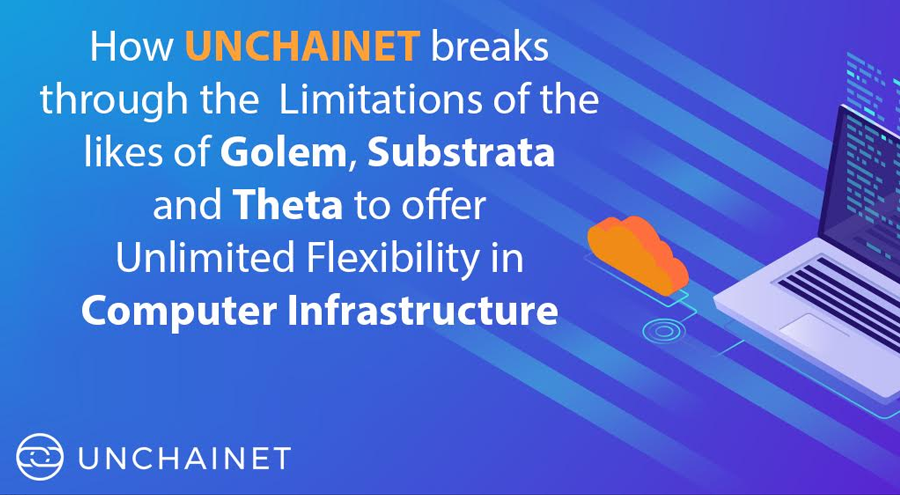With the rapid progress of cloud-based computing services and the propitious future that it holds, the possibilities seem endless. The inherent shift of clients towards cloud was primarily to reduce cost, as owning and upgrading your own servers cost a fortune not to mention the additional expenditure involved in the upgrading of capacity for technological innovations. Start-ups especially, found it extremely difficult to own servers and balance the loads with the limited resources at hand. The cloud-based services offered a prudent solution. Servers could now be rented at a nominal cost without worrying about the load balancing as the cloud-service providers took care of the same. The stage looked set for a lasting solution at a minimal cost.
Then the reality struck. A few large players had started taking inherent advantage of the demand and slowly but surely exercised their control over the cloud market. ‘Price Wars’ began and continue to this day, to create the illusion of a low-cost service. This decrease in competition amongst the cloud-based providers is destined to lead towards a monopolistic market with absolute control in the hands of a large few.
According to statistics, the current scenario is such that the cloud-based services being offered by giants such as Amazon, Google Cloud, Azure, and Microsoft are no longer cost-effective in the long run. The cost per gigabyte when looked at close quarters would reveal the unbelievable reality of how expensive the cloud-based services actually are for the long run and would lead to inherent disappointments for organizations that have been or are formulating a plan to utilize the cloud-based services from the few big players. That’s a startling revelation that showcases the true scenario of today’s cloud market. So does this mean that for the clients intending to utilize the cloud-based services there’s no option whatsoever, other than getting played along the whimsical wishes of the few large players??
Thankfully, the answer is no! Welcome, Unchainet– The unique heterogeneous cloud computing infrastructure that offers a new direction and dimension to the cloud-based market. Unchainet offers an innovative yet simple solution. To offer a platform to amalgamate individuals, hosting providers, ‘ex-cryptocurrency miners’, and companies with underutilized data centers to get worldwide reach within a fraction of time by connecting to the Unchainet network. You can also earn revenue at the same time through the open internet. It’s a win-win situation for all the participants using the robust method of ‘beneficial mining’.
Unchainet- ‘One-of-its-kind’ features
- Smart Blockchain technology for faster transactions, increased capacity, reliability, transparency, and complete security.
- Consensus algorithm titled Proof of Beneficial Work (PoBW) based on the Byzantine fault tolerance (BFT).
- Unique QoS Chain technology for monitoring transparency and quality of individual nodes in the network thus providing an automated quality control system.
- To enable true cross-border and real-time sharing of computational power without any hindrances or restrictions, internal cryptocurrency UNET is being launched to facilitate the same.
- Modular blockchain for developers to create decentralized blockchain based apps with complete customization that can be effortlessly used on the Unchainet
- Cryptocurrency based payments for faster transactions (to the tune of 10000 transactions/second), minimal transaction cost, and reduced energy cost.
- Providers, Clients, and Developers– Each provided with distinct benefits and advantages for seamless interaction with the Unchainet
- Wallet (Both Desktop & Mobile) for peer-to-peer exchange of UNET
- Service Accounts to purchase computing resources from Unchainet.
- CRC (computing resource credit) to safeguard clients from external cryptocurrency market fluctuations and also to provide the start-ups an option of a non-transferrable credit as an incentive.
Unchainet’s cloud platform provides cloud services in the form of IAAS/PAAS, additional services that include CDN, Serverless computing, and databases. Cloud B2C services (website hosting, mobile backend) are an added advantage.
A note on the UNET token
Based on ERC20 standard tokens, the UNET tokens are being created to facilitate computational resource trading on the Unchainet platform. The base price of the STO is expected to be at $1= 4.35 UNET, 1 UNET= $0.23 USD.
A max of 200000000 UNET tokens are being issued of which 67% (134000000) are being distributed for sale under a Simple Agreement for Future Tokens (SAFT). The minimum purchase value is set at $100= 435 UNET. The acceptable currencies are ETH, BTC, USD. Unchainet is, not just the future of cloud-based shared resource services but a company worth considering investing with the UNET set to facilitate the decentralized change in cloud computing.
With Big Data Processing, Server Application Hosting, Website Hosting, AI Training & Machine Learning, and dApp Ecosystem (Payments & Identities) as some of the tasks and applications that can be run on the platform combined with the array of stunning features that it offers, Unchainet is the future of the cloud-based computing services and is well on its way to being a pioneer in the industry.
More information can be found in the whitepaper and official website.
